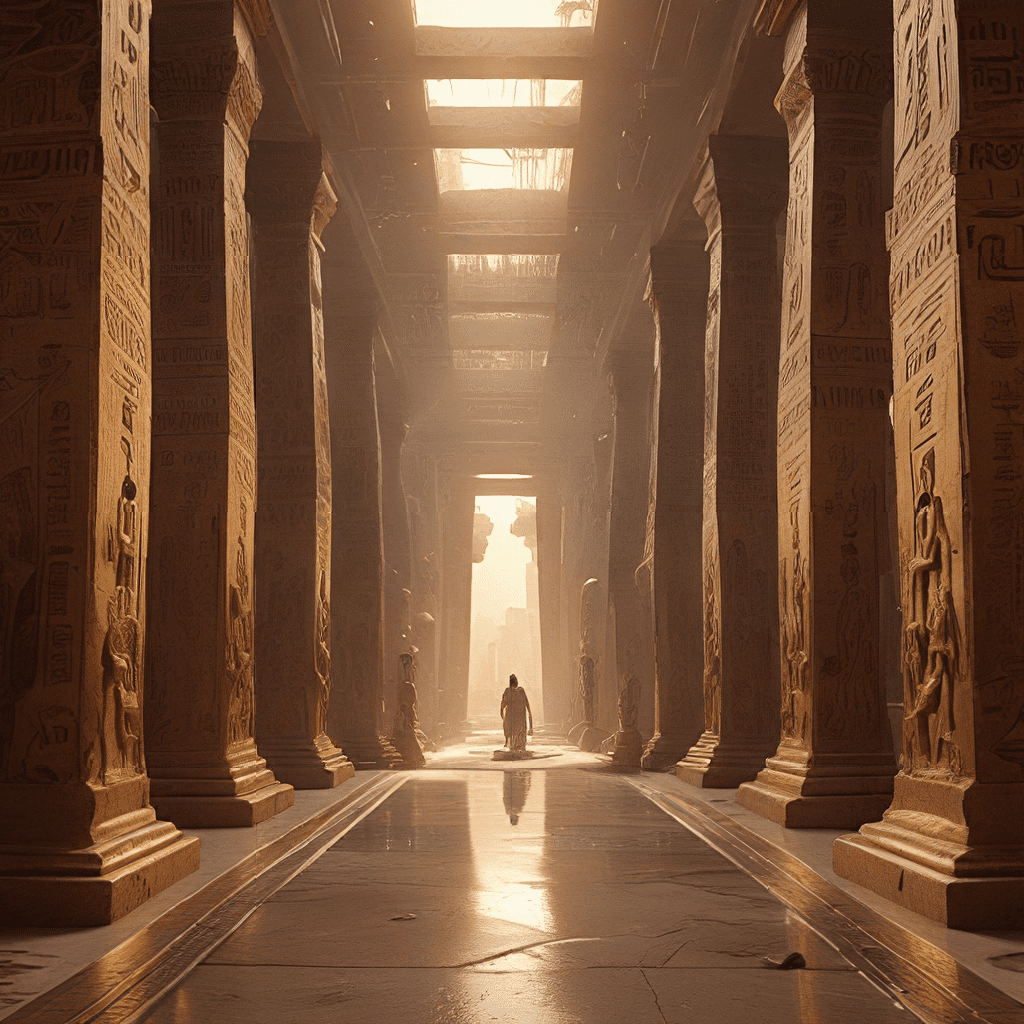The Egyptian Concept of Afterlife
Ancient Egyptians believed that life didn’t end with death. Instead, they saw death as a journey to the afterlife, a realm called “Duat.” This afterlife wasn’t just an eternal sleep; it was a continuation of life, but in a different form. The Egyptians believed that their soul, called “ka,” would continue to exist after the body died. The “ka” carried a person’s personality, experiences, and memories. To ensure a successful journey to the afterlife, the Egyptians performed elaborate burial rituals and placed objects in their tombs. These objects were intended to help the deceased in their journey and provide them with everything they needed in the afterlife.
The Importance of Death and Burial
Death was a crucial event in ancient Egyptian life. They believed that a proper burial was essential for the soul’s journey to the afterlife. They spent much time and effort preparing for death, building magnificent tombs, mummifying the body, and creating elaborate funerary rituals. They also believed that the preservation of the body was important for the soul’s journey. Mummification, the process of preserving the body, was believed to prevent the deceased’s body from decaying and allowed their “ka” to recognize it.
The Journey to the Underworld
After death, the soul embarked on a perilous journey through the underworld, known as the Duat. This journey was fraught with dangers and challenges, and the deceased needed to navigate their way safely to the Hall of Two Truths. Ancient Egyptians believed that the Duat was a vast and shadowy realm, filled with mythical creatures and challenges, such as the terrifying monster Ammit and the dangerous serpent Apophis. The deceased had to face various trials and tests, and the outcome determined their fate in the afterlife.
The Hall of Two Truths
The Hall of Two Truths was a critical point in the afterlife journey. It was here that the deceased’s heart was weighed against the feather of Ma’at, the goddess of truth and justice. The heart represented the deceased’s deeds in life, while the feather represented the divine standard of righteousness. If the heart was lighter than or equal to the feather, the deceased could proceed to the Field of Reeds. This was the ultimate reward in the afterlife. However, if the heart was heavier, it would be devoured by the monster Ammit, leading to eternal damnation.
Weighing of the Heart Ceremony
The Weighing of the Heart Ceremony was a crucial part of the journey. This was the time when the deceased’s heart was weighed against the feather of Ma’at. The ceremony was overseen by Anubis, the jackal-headed god of mummification and the afterlife, and Thoth, the god of wisdom and writing. The deceased needed to recite the “Negative Confession,” a list of 42 statements denying wrongdoing. If the heart was found to be pure, the deceased could proceed to the Field of Reeds. This ceremony highlighted the importance of living a good and moral life.
The Field of Reeds
The Field of Reeds was the ultimate reward in the Egyptian afterlife. It was a paradise where the deceased enjoyed eternal peace, happiness, and abundance. The Field of Reeds was a lush and fertile land, filled with fields of reeds, flowering lotus plants, and flowing waterways. Here, the deceased could enjoy a carefree and joyful existence, free from the worries and burdens of earthly life.
The Role of Gods and Goddesses
Many gods and goddesses played roles in the afterlife. Osiris, the god of the underworld, was the ruler of the Duat and guided souls through the afterlife. Anubis, the jackal-headed god, oversaw the mummification process and weighed the deceased’s heart. Thoth, the god of wisdom, recorded the outcomes of the Weighing of the Heart Ceremony. Ma’at, the goddess of truth and justice, ensured fairness and balance in the afterlife. The Egyptians prayed to these gods, hoping for a safe and successful journey through the afterlife.
Notable Features of the Afterlife
The Egyptian afterlife was a complex and fascinating realm. Some notable features of the afterlife included the Boat of Ra, a solar barque that sailed through the underworld every night. The Boat of Ra represented the journey of the sun god Ra through the Duat. The journey was often depicted in tomb paintings and sculptures, offering a glimpse into Egyptian beliefs about the afterlife. Another notable feature was the Osiris myth. The myth of Osiris, his murder by his brother Seth, and his resurrection, played a significant role in Egyptian beliefs about the afterlife. The myth symbolized the cyclical nature of life, death, and rebirth, and provided hope for a happy and fulfilling afterlife.
Ancient Egyptian Beliefs on Rebirth and Reincarnation
The Egyptians believed in a form of rebirth, but not in the sense of reincarnation. They believed that the “ka” (soul) could be reborn in the afterlife, but it wouldn’t be reborn in a new body. They believed that the “ka” maintained its individuality and would retain its experiences and memories from its previous life. The idea of reincarnation, as understood in other cultures, was not a core belief in ancient Egypt. They focused on ensuring a safe passage to the afterlife and achieving a fulfilling existence in the Field of Reeds.
The Influence of Egyptian Afterlife Beliefs on Modern Culture
The ancient Egyptians’ belief in the afterlife has left a lasting impact on modern culture. Concepts like mummification, the underworld, and the Weighing of the Heart have been incorporated into various forms of entertainment, literature, and art. The Egyptian gods and goddesses, such as Osiris, Anubis, and Thoth, have become iconic figures, inspiring artists, writers, and filmmakers for centuries. The enduring fascination with the Egyptian afterlife speaks to the enduring human desire to understand the nature of death and what lies beyond.




